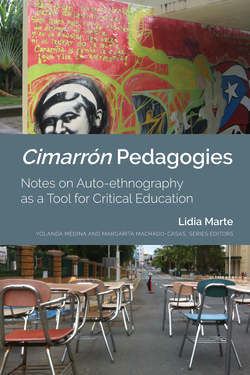Читать книгу Cimarrón Pedagogies - Lidia Marte - Страница 23
На сайте Литреса книга снята с продажи.
On the Uses of Ethnography: Feminist, Critical and Post-Colonial Ethnographies
ОглавлениеContemporary ethnography exhibits a wide and diverse range of fieldwork methods mixtures (from applied action research to digital ethnography), and also a diversity of narrative styles in the production and dissemination of academic findings (from self-reflexive, postmodern hybrid texts to performance and ←20 | 21→ethnographic exhibitions). Critical ethnography and Post-Critical Ethnography refer to post-structural, post-colonial and feminist ethnographic praxis, informed by performance and gender/sexuality theorizations coming from diverse disciplines, which had their boom since the 2000s (see Foley 2002, Ortner 1996). Yet, this kind of radical critical ethnographic approach is still not the mainstream in the practice of anthropology, nor among many ethnographers in the US and beyond. The post, in post-critical ethnography (see Noblit, Flores & Murillo 2004), points to the need of an anthropology relevant to understand a post 1990s world, but sadly, given 911 legacies and more recent events in US political “devolvement” (such as the Trump administration), it becomes even more needed now.
Concrete and virtual fields have fuzzy boundaries of where/when “home” and the “field” begin and end (see Gupta & Ferguson 1997). Our experience as ethnographers is shaped by who we are as specific humans, that is why our cultural history needs to be taken into consideration in the research design, during fieldwork and data gathering, since this affects how we interpret data, and the kinds of narratives and representations of “others” we create when sharing our academic findings with particular publics. A critical ethnographer is always interdisciplinary, concerned with a wider global vision, yet, invested in the local narrow focus of cultural specificity. This wider vision is basic to understand the unity of our shared human experiences, and the narrow focus help us dislodge essentialized determinisms to show situated experiences, from particular perspectives, evidencing the diversity as inseparable from our unity. For example, as a critical feminist ethnographer, I design research projects that ask open-ended how and what questions. There are some ethno-historical whys—in conversation with the ethnographic present—that arise out of answering what and how types of questions that can be proposed as possible interpretations, and it is from there that I generate theoretical contributions.
Investing time to choose ethically our toolkits for research help us design projects that are valid, relevant, situated, engaged and grounded on process—fieldwork as cultural encounter—as well as in the more general outcomes and implications of our topic of analysis. As the main instruments of research, ethnographers are immersed in the same matrixes of power and cultural ethnocentrisms as the study participants, although occupying different power locations. Feminist critical ethnographers focus, hence, on understanding the embodied experiences of our collaborators, not abstract a priori identities, but practices performance and narratives, places-environments-relations, communicative interactions and silences, mapping routes and movements, as well as the materiality—objects of daily use—of ordinary as well as sacred artifacts (from cooking pots to the cell phone). The naming of the individuals we work with is also important for a feminist critical ethnographer; from the use of “informants” we have moved to participants or “collaborators.” The ←21 | 22→term informant was widely used in early anthropology and later by the CIA in his undercover surveillance, aptly referring to individuals that in one way or another informed on their people to those that were paying them. Changing the way we name the people we work with is not a semantic frivolity, but an alignment with the shift from “objects” of study to “subjects” that are social agents, whose willingness to work with us and their invaluable help are essential for the completion of any ethnographic project. This part of our ethical mandate honors the dignity of these humans and help us keep re-inventing an ethnographic practice that could be useful beyond academia.
This kind of ethnographic intervention is more a “caring-witnessing” and an engaged practice that requires also a new name, hence I use the term “deep hanging-out” (this is a form of critical “observant-participation,” as Joao Costa Vargas suggests). For example, during fieldwork my intention is to be aware and attentive to an embodied field practice that foregrounds place, spatial relations of bodies, communication and practices, material culture and movements. Through narrative-focused elicitation, dialogue and oral histories, I document my collaborators perspectives, while participating and learning the local daily choreographies that they follow throughout a day. This renaming is more widely used among feminist anthropologists, as does the often used “rich point” (a challenging moment of research through which we find a new insight to redirect the project, see Agar 2006, 2004, 1986, for a discussion of this). Rich points are many and useful, and go beyond re-directing the course of our projects, it is inseparable from the micro-politics of fieldwork, and how the personal becomes essential to take into account in project design and in the process of fieldwork. For example, Caribbean food practices and cuisine are by-products of the “Columbian exchange” and colonization, as well as of the plantation slavery regime. It would be hard to understand and explain the ethno-present of bacalao (Norwegian dried-salted codfish) consumption in the communities I work with as a cultural “choice.” But it is my “native” status, my familiarity with the Caribbean, with its colonial ethno-history and cultural practices, as well as knowing the actual taste of bacalao, what allows me to make to make fine-grained observations during fieldwork and later careful analysis of the food data.
